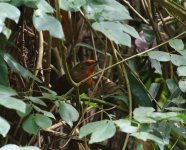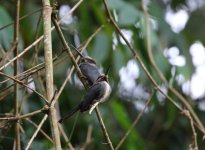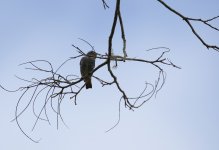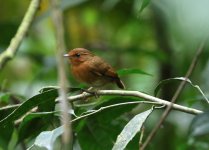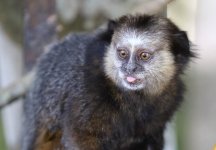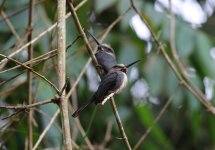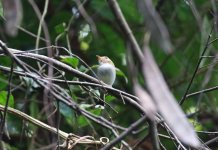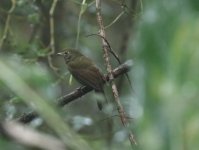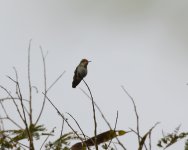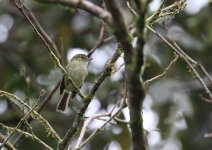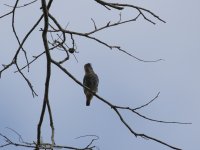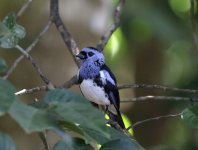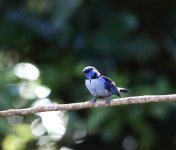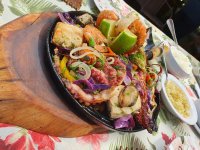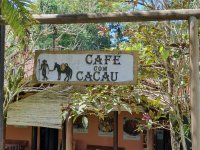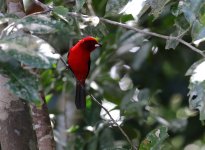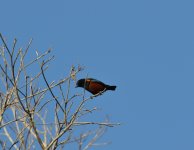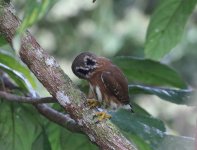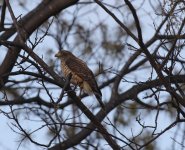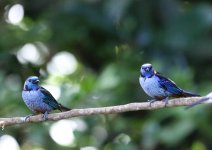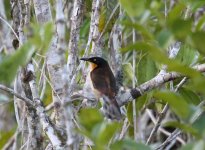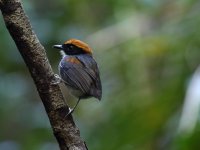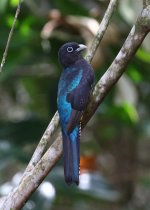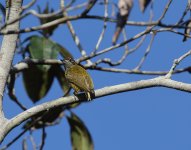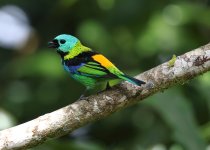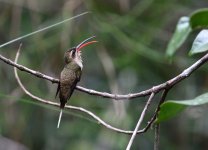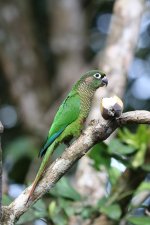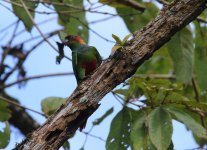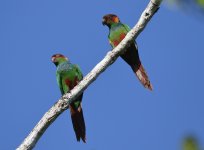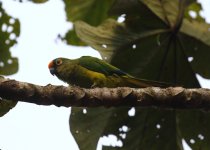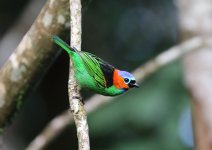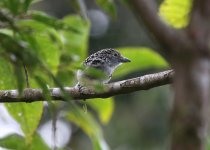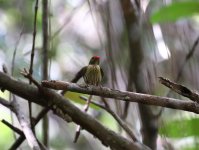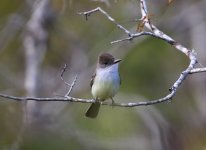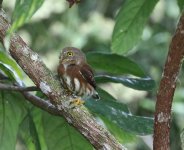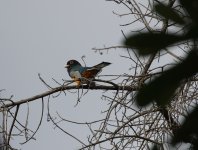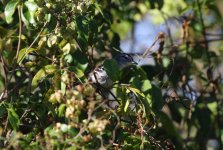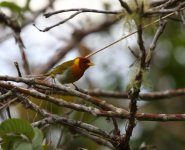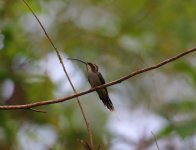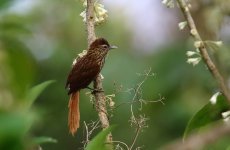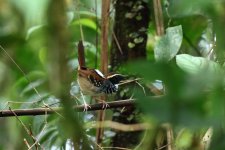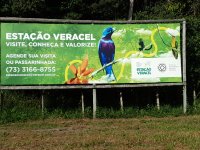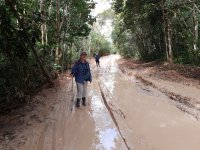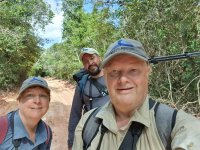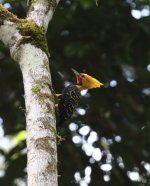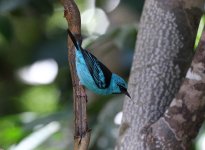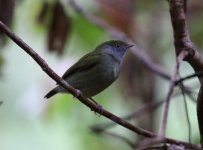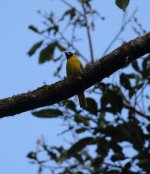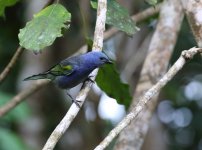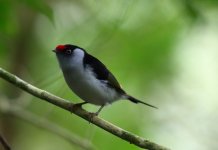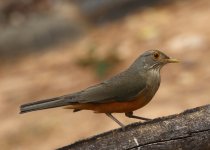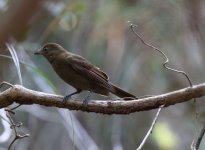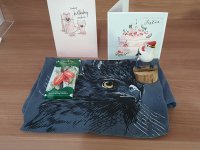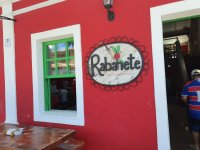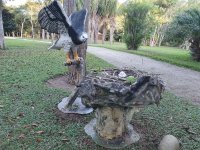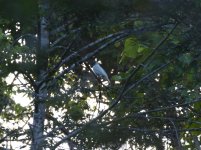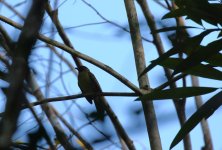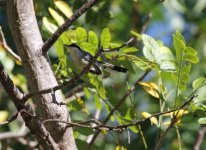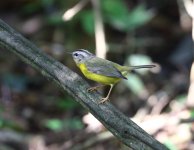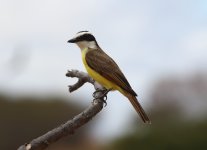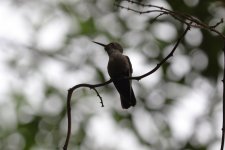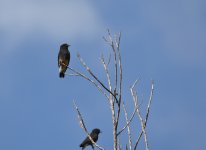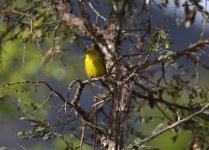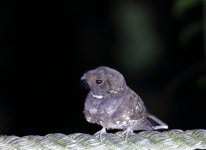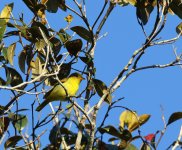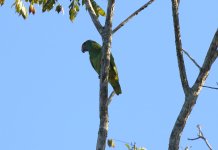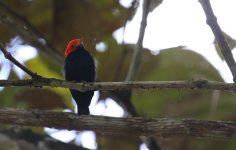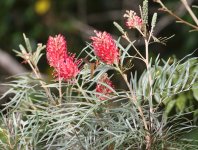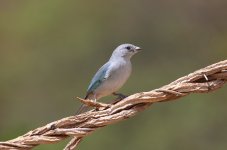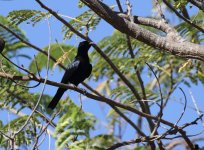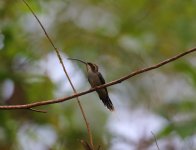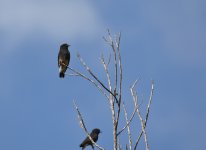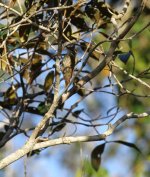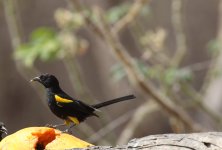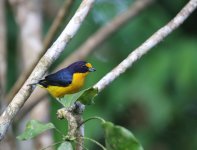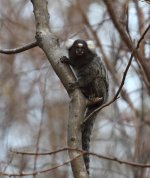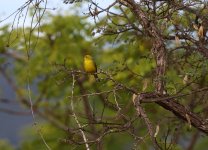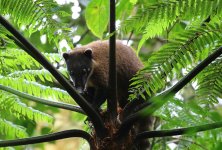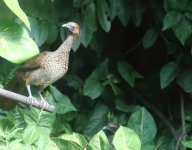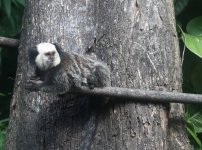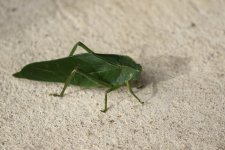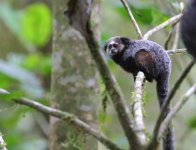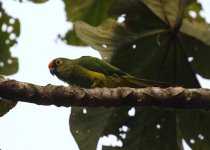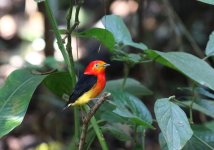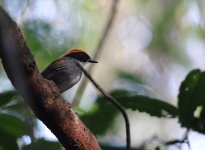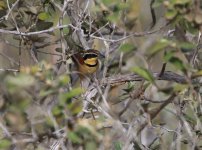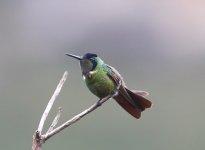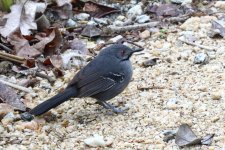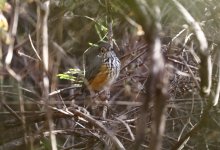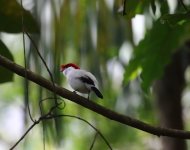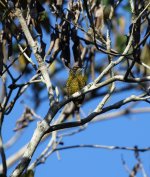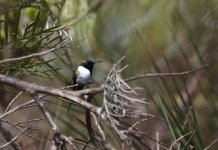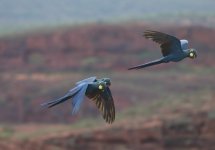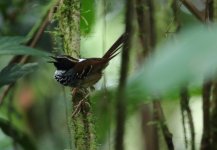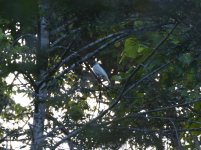Day 9
There is a place nearby the hotel (around 20 minute drive), with a natural hummingbird garden full of ground cacti that blossom every day attracting many nice hummingbirds. Fortunately, this pristine and unique area is now owned and protected by a Brazilian couple of birders who are constantly improving facilities this is the famous “Lajedo dos beija-flores”.
We had a nice few hours here taking shelter from some showers but then getting a chance to see some good birds as the sun eventually broke through. We started by seeing a pair of Slender Antbirds at the rear of the property, these were joined by Great Antshrike and Silvery-cheeked Antshrike but once it was fully light activity took off with plenty of hummers coming to a mix of plants and feeders, in order we saw Swallow-tailed Hummingbird, Planalto Hermit, Black-throated Mango, then my favourite of the morning Stripe-breasted Starthroat, Violet-capped Woodnymph, Sapphire-spangled Emerald and finally Broad-tipped Hermit a pretty good haul. Other birds in the garden included Cactus Parakeet, Golden-capped Parakeet, Pale-legged Hornero, Yellow-breasted Flycatcher, Tropical Pewee, Violaceous Euphonia, Rufous-collared Sparrow, Green Honeycreeper and White-lined Tanager. Then Ciro was approached by a friend who works in the gardens, a couple of Tinamou were coming to area near his hut. We tried calling for a long period but with no success gave up and went to an area where some finches were being coming to seed, here we saw Pileated and Saffron Finch and Burnished-buff Tanager but Ciro said he heard the Tinamou calling pointed ahead and suddenly we had a couple of Small-billed Tinamou walking across the path below us. Later when I trying for better photos of the hummers Sarah found the two birds again but not quite as go for photos. We ahd one last surprise with possibly the rarest birds of the morning flying in Brown-backed Parrotlets unfortunately we couldn’t get round to photograph them before they flew off.
On the way pack to the hotel we tried for small waterbirds, and had a Rufous-sided Crake after much effort and Purple Gallinule and Blackish Rail with almost no effort. Only other bird was White Mojita.
After lunch it was raining and we decide to go into the Atlantic Forest trail which offered some cover, birding was steady and we saw some great birds but lighting wasn’t great for photography. Also the track was pretty wet and skiddy even in a 4x4 so we didn’t drive very much. We did quickly get two key targets Bahia Spintail and Striated Softtail and then White-eyed Foilage Gleaner and Crescent-chested Puffbird. The rain then got really heavy for 30 minutes and we sheltered under some trees, quite fortunate as we were underneath a Sharpbill which stayed in shelter with us for a couple of minutes until the sky brightened. After the rain had eased the birds were more of the same with some Thrushes and Flycatchers thrown in before we caught up with another cracker a Rufous-headed Tanager and then two new Flycatchers, Whiskered Flycatcher and Grey-hooded Atilla and finally a Buff-throated Saltator.
There is a place nearby the hotel (around 20 minute drive), with a natural hummingbird garden full of ground cacti that blossom every day attracting many nice hummingbirds. Fortunately, this pristine and unique area is now owned and protected by a Brazilian couple of birders who are constantly improving facilities this is the famous “Lajedo dos beija-flores”.
We had a nice few hours here taking shelter from some showers but then getting a chance to see some good birds as the sun eventually broke through. We started by seeing a pair of Slender Antbirds at the rear of the property, these were joined by Great Antshrike and Silvery-cheeked Antshrike but once it was fully light activity took off with plenty of hummers coming to a mix of plants and feeders, in order we saw Swallow-tailed Hummingbird, Planalto Hermit, Black-throated Mango, then my favourite of the morning Stripe-breasted Starthroat, Violet-capped Woodnymph, Sapphire-spangled Emerald and finally Broad-tipped Hermit a pretty good haul. Other birds in the garden included Cactus Parakeet, Golden-capped Parakeet, Pale-legged Hornero, Yellow-breasted Flycatcher, Tropical Pewee, Violaceous Euphonia, Rufous-collared Sparrow, Green Honeycreeper and White-lined Tanager. Then Ciro was approached by a friend who works in the gardens, a couple of Tinamou were coming to area near his hut. We tried calling for a long period but with no success gave up and went to an area where some finches were being coming to seed, here we saw Pileated and Saffron Finch and Burnished-buff Tanager but Ciro said he heard the Tinamou calling pointed ahead and suddenly we had a couple of Small-billed Tinamou walking across the path below us. Later when I trying for better photos of the hummers Sarah found the two birds again but not quite as go for photos. We ahd one last surprise with possibly the rarest birds of the morning flying in Brown-backed Parrotlets unfortunately we couldn’t get round to photograph them before they flew off.
On the way pack to the hotel we tried for small waterbirds, and had a Rufous-sided Crake after much effort and Purple Gallinule and Blackish Rail with almost no effort. Only other bird was White Mojita.
After lunch it was raining and we decide to go into the Atlantic Forest trail which offered some cover, birding was steady and we saw some great birds but lighting wasn’t great for photography. Also the track was pretty wet and skiddy even in a 4x4 so we didn’t drive very much. We did quickly get two key targets Bahia Spintail and Striated Softtail and then White-eyed Foilage Gleaner and Crescent-chested Puffbird. The rain then got really heavy for 30 minutes and we sheltered under some trees, quite fortunate as we were underneath a Sharpbill which stayed in shelter with us for a couple of minutes until the sky brightened. After the rain had eased the birds were more of the same with some Thrushes and Flycatchers thrown in before we caught up with another cracker a Rufous-headed Tanager and then two new Flycatchers, Whiskered Flycatcher and Grey-hooded Atilla and finally a Buff-throated Saltator.
Attachments
-
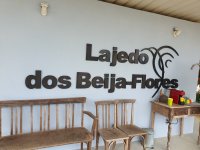 20230817_083114.jpg6.2 MB · Views: 19
20230817_083114.jpg6.2 MB · Views: 19 -
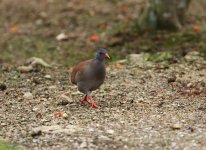 small billed tinamou.JPG6.8 MB · Views: 18
small billed tinamou.JPG6.8 MB · Views: 18 -
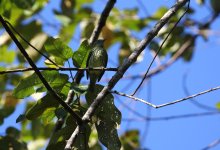 sharpbill.JPG5.3 MB · Views: 18
sharpbill.JPG5.3 MB · Views: 18 -
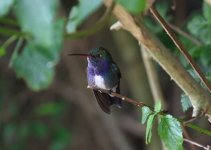 sappspangled emerald closeup.JPG5.9 MB · Views: 18
sappspangled emerald closeup.JPG5.9 MB · Views: 18 -
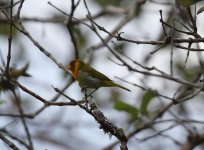 rufous headed tan singing.JPG4.5 MB · Views: 15
rufous headed tan singing.JPG4.5 MB · Views: 15 -
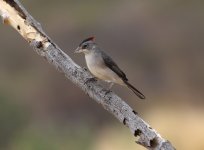 pileated finch.JPG3.7 MB · Views: 15
pileated finch.JPG3.7 MB · Views: 15 -
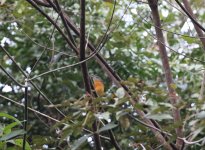 gret headed atilla.JPG7.2 MB · Views: 16
gret headed atilla.JPG7.2 MB · Views: 16 -
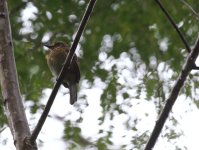 crescent shaped puffbird.JPG3.4 MB · Views: 15
crescent shaped puffbird.JPG3.4 MB · Views: 15 -
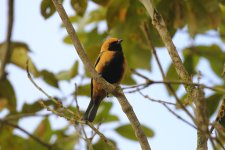 buff b tanager.JPG8 MB · Views: 16
buff b tanager.JPG8 MB · Views: 16 -
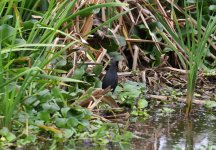 blackish rail.JPG6 MB · Views: 17
blackish rail.JPG6 MB · Views: 17 -
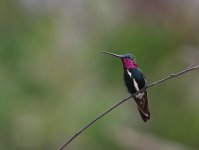 srtipe bres starthroat.JPG2 MB · Views: 13
srtipe bres starthroat.JPG2 MB · Views: 13
Last edited:




